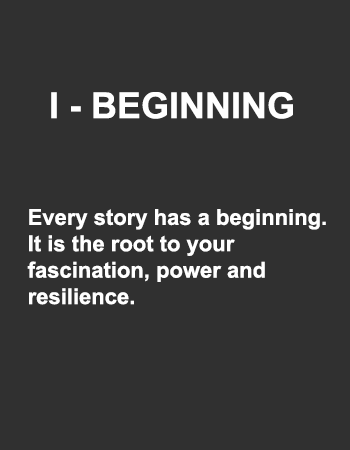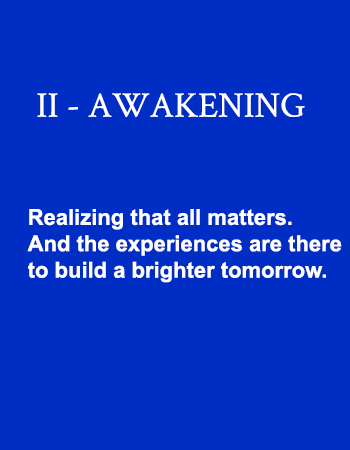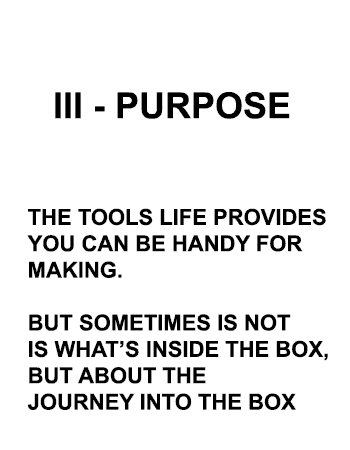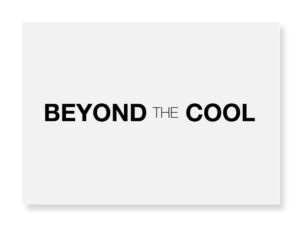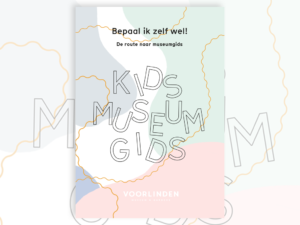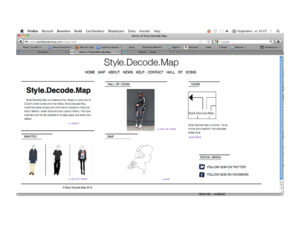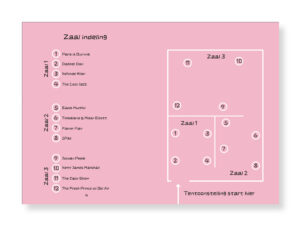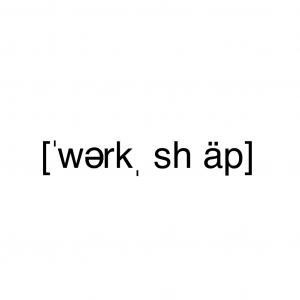Jump start by clicking on the GIFs or follow the Blue brick road into a portfolio of cultural hybrid art teacher.
Note: this page will be updated until mid June 2022
Jacques de Leeuw nomination 2022
Every story has its beginning. In this case the beginnings are dark, gritty and may cause disbelieve. Especially if it are unheard – oh no – there were unheard because the stories were pushed aside.
This sounds as the beginning of a bitter story, doesn’t it? But still that story – the story of not only myself, but generations before me and people who are alive now – is rooted in a lost past, never-settling present and blurred future. That is why I never spoke about it. Being the silent, smiling pushover.
Events can trigger deep emotions in environments where there is no space be hold for these stories.
I was afraid to come across as bitter, angry and a whiner if I tell what my perspective is. And actually that were comments that have been said to me when I show people the black and global perspective I inherit. That is why I put on a white mask over my black skin referring to the book ‘Black skin, whites masks’ of Frantz Fanon. Because my perspective and the story of my community affects me. My perspective have made me disguised of myself of being black in a world where white is the default and praised.
Yet I decided to open up by telling my story and the black community with the help of the arts. Opening up has finally let my white mask fall off. I can see my dark skin for what it is. I can see with my eyes. I can touch my hair. And I can breathe and exhale again. Let’s this be another step in the right way into a global appreciation and perspective. And reveal where we all can make the world a better place for not you but also me. That I think that have me been nominated for the Jacques de Leeuw Award.
So this is the story of breaking the shackles of being unseen, cultural appropriated and the community of misunderstood trailblazers of STREET.BLACK.SUBCULTURE.LOW CULTURE.AND.DIVINE.COOL.
I – BEGINNING
WHAT THE IMPACT OF A NAME CAN BE
Hi, I’m Kesha. My name often raises questions, because when you see it on paper, people always ask: how do you pronounce it? And where does the name come from? The pronunciation is as follows: kees-ja (ENG: Case-ya).
And where it comes from, yes, that’s where the seed was planted for who I would become as a person later on in (artistic) life.
My mother had no name for me when I was born. According to ancient Antillean custom, you should never name a child before it is born. With my older sister, my parents did have a name: Roxanne. The girl died during her birth. The Black satirical element in me always says: I bet the name is derived from The Police song, but nobody wants to be named after a song about a prostitute, right?
You see, my father was a big fan of singer Sting. And he came to my mum with the name Roxanne. And probably until the day he died back in 2021 he felt guilty. Looking back I see in his behaviour and in how he spent his life outing his pain and lost in hostility towards everyone, even the ones he really loved.
The loss of the baby meant that my mother had not come up with a name when she was pregnant with me a few years later. After an emergency caesarean section, it took my mother 10 days to give me a name. Since she had no name, she thought about what she had looked last on the TV before she had to be rushed to the operating room. She remembered she was watching an episode of The Crosby Show. And in the end credits, she saw that the young actress who played Ruby was called Keshia or Kesha. But she wasn’t sure what the spelling was anymore, so she chose Kesha. And since the series painted a different picture of a black family, she thought it was a great association for a child born from Curaçao parents. At a time when there weren’t very much black people in the Netherlands yet.
A few decades later Bill Crosby has been cancelled, but the influence of black media, pop culture, rituals, spirituality and ancestry has remained in my life. And has influenced me for what I stand for, which stories I want to tell and how they are told. That makes my identity dynamic: I move in different worlds – material, spiritual and national. It is partly in a lost past and a present that isn’t integrated. This alienating and chaotic in-between area is my inspiration and my creative playground. And I’d like to not be the one just to take a look at this, but for everyone to get a different view and a global perspective on today’s global pop culture.
b. 5 JANUARY 1987
FROM THE GET GO:
POP CULTURE HAVE SET THE TONE
I – BEGINNING
TV: my gateway to ‘culture’
When I was a kid, television was my best friend. It was the gateway to the world. I discovered Hong Kong on CNN at the age of five. I learned to draw by watching a British children’s channel. I marvelled at the splendour of Bollywood films. Not a day went by and MTV wasn’t turned on.
But I also searched until I saw what I could define as a home: Afro-American culture. I found it in sitcoms like Fresh Prince of Bell-Air and Family Matters. Another show I couldn’t miss was The Oprah Winfrey Show. And after that to blare along with raps filled with foul language of Lil’ Kim and Missy Eliott. I didn’t hesitate to take it in and embrace them all.
Art meant to me: the art of taking me along in a story. So it could be anything and any kind. It had to be able to touch me on an emotional level: laughing, crying, feeling anxious or getting angry.
Fashion
Clothing played a major role in our family. Despite the fact that I grew up here in the Netherlands, the customs and rituals regarding clothing have a lot of influence on me.
Everything had to be new for New Year’s Eve. Second-hand clothing never ever enter the house: the older people of the Islands say you don’t know what someone done in those second-hand clothes. It will stick onto your life when you wear other people’s clothes (i.e. bad luck if they did something bad while wearing those clothes).
Hip hop and R ‘n B
I’m a 90s kid so I listened to these music genres a lot during that time. 2Pac, Missy, Biggie, Snoop Dog, Fugees, Aaliyah and Toni Braxton.
The music videos and the clothes of these artists had a lot of influence on the fashion and visual representation of POC.
What has it meant to me? It represents black woman as tough, living for herself and on her terms And of course doing all that with super good beats as background music.
At this moment (2022) students I have in my lessons are wearing a lot of clothes from those clothes or that are inspired by them.
Japan
My curiosity for this country inspired me to take a Japanese culture and language course in the evenings. I got interested in the country through well-known anime and Kawaii characters.
The more I get to know this country from a distance, the more I want to go deeper. Slowly I start to understand that I am gripped by Japan through its spiritual influence in daily life, which I recognise from my own roots from the Antilles.
“I ASKED,
BROTHER HELP ME,
BUT HE WINDS UP,
KNOCKIN’ ME”
I never thought that in the 21st Century and in the Netherlands this song and especially this lyric would be the case.
And was the soundtrack to a moment that planted an another seed for me becoming a Visual Arts teacher is the situation I encountered back at fashion school.
I had trouble in the third year as fashion design student for creating designs based on creating shapes and silhouettes. The teacher who gave fashion design class, was the ONE what got AMFI back in the news in 2021. One year after the hashtag black out tuesday.
(The audio doesn’t work at this moment. I will set up a SoundCloud account).
How did this event influenced me as upcoming teacher?
As educator:
- You are not there for yourself, your needs and wants, but you are there for the students.
- You are there for ALL students.
- Hold space that students can trust you, no matter what. Made sure that the students aren’t afraid to ask you when they are doubting their work, don’t understand the assignment or want to share their story with you.
- Leave your prejudice at home
- When the student fall, you keep picking the student up.
- If the student somehow fail, don’t mock the student
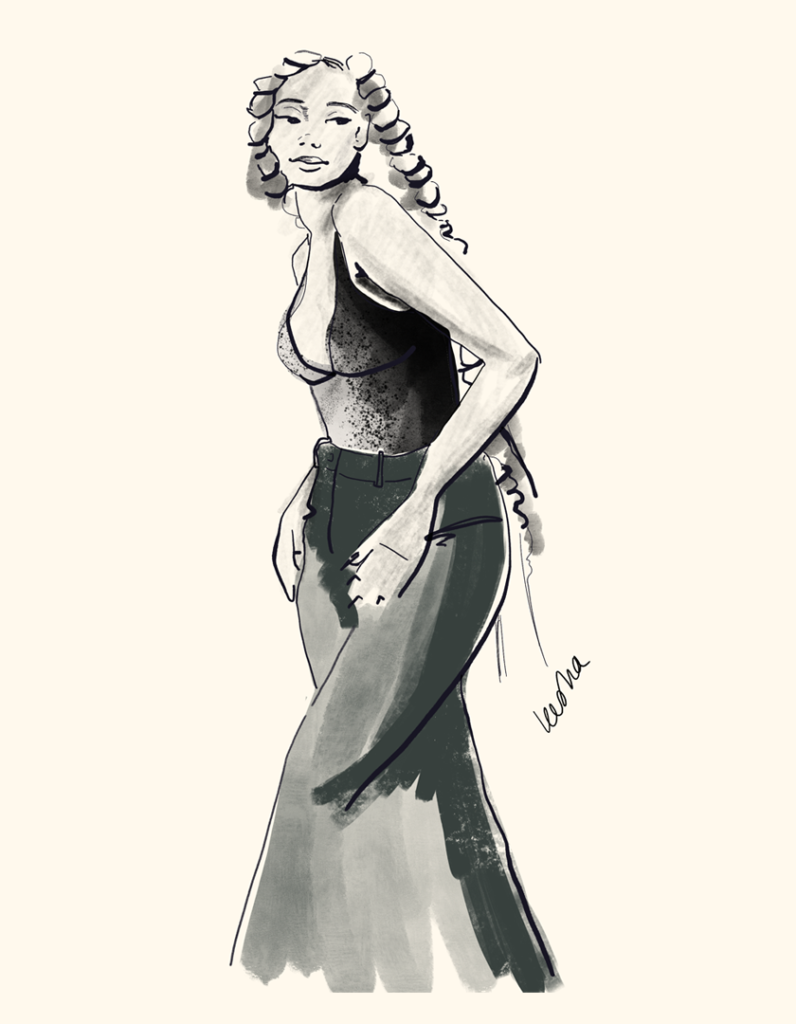
How did this event like the one above influenced me as maker?
The experiences with not diverse gatekeepers let me took years before I could embrace my values as maker and human being.
As someone that carried the label of ‘streetwear’ and therefore put aside as ‘low’, I never picked up the loose way of drawing ever again after graduating in 2009.
I thought (or made believed?) that this way of making illustrations is for people higher on the echelon. Not for someone which favorite movie is Coming to America and style icons are hiphop artists and R ‘n B singers.
In 2020, just for fun and to experiment with the iPad and ApplePencil I started to draw in a way I was used to at AMFI.
Now I see that elegance isn’t limited to race and class. My style of illustrating is a mix of everything I absorb as kid, teenager and grown-up. That makes it my own and refreshing.
Illustration, Untitled © KESHA FELIPA
GOOD vs COOL: HOW CAN WE FIND THE GOOD WITHIN THE ARTS?
Gert Biesta writes in his essay Door Kunst Onderwezen willen worden (Letting Art Teach from 2017):
The Arts is there to start a dialogue with the world around us. The teacher shows the student what is good, meaningful of important to comprehend the world.
What the heck is good?
I think when it comes to the term good in relationship with art as what is to be consider as good art to be tainted. From a black perspective ‘good’ also means that it fits into the framework of western approval. If I take the term ‘cool’, it can be everything or anything as long it is cool. Cool is a feeling, it is dope and it can be found in the strangest places. The front runners of Hip hop sampled among Soul and Funk music from German elektroband Kraftwerk, because the sound resonated something. That something was examined, researched and finally the dopeness of mixing it all and put rap over the beats, made it cool. Cool is also something which is ‘fresh’; the new way of looking at the world.
So how can a student be in dialogue with the ‘world’ if what is considered good is limited by perspective of the Dominant group and a team of gatekeepers?
The student can only start the dialogue with the world, if he/she/they can get the opportunity when ‘good’ isn’t the default anymore. Let values and what does it personally evokes you be the standard. Also the unknown; it might be that what scares you, doesn’t interest you or isn’t your culture can be the thing that start the dialogue. If isn’t showed to you as student, you might never know.
That is why it is time for a global perspective.
QUICK QUESTION
Yves Klein Blue
Or
Bloùs?
This small, but important example shows how systems of mental concepts can differ. And that is okay. It should open up the mind. Give and hold space to let someone to tell. Ask questions, but leave room for the other to tell. Listen to stories that might be alien to your ears, but are as valuable as the stories of western perspective focussed people.
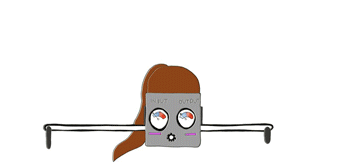
Illustration + GIF, Style Decoder GIF, 2012 © KESHA FELIPA
II – AWAKENING
ALL MY EXPERIENCES, THE THINGS THAT I LOVE AND GOT SCORNED FOR, JUST MADE ME GO…
“APESHIT” is “anger expressed and translated into action in the service of our vision and our future,” to use the words of the late American writer and feminist activist Audre Lorde; anger that is shown as well as transformed into something new, vital, and hopeful.”
– source:
APESHIT TRANSFORMS ANGER INTO SOMETHING NEW THAT IS HOPEFUL?
OK.
LET’S GO!
Cultural identity from a black perspective
A personal journey into belonging and becoming. And becoming an advocate for another perspectives into today’s global pop culture.
My graduation project at Fontys Hogeschool voor de Kunsten (FHK) is clearly inspired by my personal and professional experiences. See part I – the Beginning for further reading.
At my previous studies I have tapped into my subculture, but it was always from a very positive perspective. I gave some explanation about the codes and symbols of the subculture, but never in the raw and confronting way. Deep down I know if I would dive into it, really beneath the surface, the chances were great to I could come across as bitter at one point. I always did admire fine artist Karen Walker for putting a mirror in front of the audience with her art. It did tear me apart this walking on a wire, because I had my experiences. And I also wanted to fit in.
So the first meet-up for graduation year I looked back to the previous year of my Teacher Training and I suddenly let down my guards. I somehow couldn’t keep my white mask up any more. It might have been that my students at the internship in Rotterdam Zadkine Fashion College inspired me. Or personal event in Spring 2021. Any way I couldn’t do it anymore.
Like the first story of my portfolio there always have been a huge pressure on me, like I should ‘save’ myself, my family and my community by being the best. But I did the opposite: I abandoned my cultural identity. It is like Frantz Fanon writes in ‘Black skin, white masks’: black Antillean will adapt and put on ‘white’ masks, the better they do that, the more they feel that they become a true human being (Fanon, 1952). In short: black is bad, ugly and nasty. White is pure, of value and important.
With a bit of hesitation I started to collect a set of art works about this feeling like I don’t belong as maker. The first work I selected was BLNKNWS of Kahlil Joseph. I have a personal anecdote about this work, so it really should made to cut. Joseph has been juxtaposing lyrics and visuals from hip hop, films, animations and newly made footage into a more diverse news reporting broadcast about black culture. This artwork fire started a research into the concept of cultural identity. It brought me to the (literary) works of like I mentioned already Karen Walker & Frantz Fanon, Stuart Hall, Jay-Z, Kendrick Lamar, Anthony Kwame Appiah and Guy Cools. Some names I bumped into years ago, but it was always in a mix that never really went as deep as it did this graduation year.
Next to the desk research I spoke to name a few with a curator of Boijmans van Beuningen museum, curator of het Rijksmuseum and my former lecturer of AMFI (a South African woman: one of the few art educators of color I have meet in during my studies).
The result of all my research is a digital platform that has the goal to help to broaden the western perspective into a global perspective within art education. I let the students at my internship been the inspiration of the platform. I didn’t ask tutors, teachers or lecturers for any input. The students are talking via the platform for more attention for art and culture subjects. I hope with applying for the master art education (MKE) at Fontys the platform can enter a new level of its development. This next step can be for example be a book club for lecturers that want extra training about global perspective, subscription for assignments and events.
This journey lead – without me knowing – to the jumpstart to be nominated for Jacques de Leeuw Award.
Graduation project documentation (Dutch only): Beyond The Cool_Graduation project FHK
Link research graduation year DBKV:
Upper video: a short impression of the video installation BLKNWS in OSCAM (Amsterdam Zuid-Oost)
Video below: is an online lecture of Hammer museum about the art work BLKNWS and the artist Kahlil Joseph
This short documentary you see below from Kunstmuseum Den Haag is a good example how the discussion about cultural identity and appropriation can be done with PoC creators within the context of art and museum education. The insight and way of thinking of these fashion designers inspired me to widen my own perspective.
In May 2022 Kendrick Lamar released new music after years. The theme and the music video tapped into the issues that were at centre in my graduation research. That is why I have let this song and the music video be a part of my graduation presentation on 10th of June.
ABV MOTIVATION NOMINEE
Her personal experiences as a black woman, growing up in a white world and as a student/designer in a fashion world dominated by white, western people, have been the starting point for her graduation.
In her research, Kesha shows her personal experiences and transcends them at the same time. From this point of view she creates an art education platform, in which she researches for her own black ways of storytelling in art education (which is inspired by hip-hop, among other things) and for how she can use these narratives under her own conditions (and not the stage which is offered to her by the white majority culture, she is inspired by, among others, Beyoncé and Jay-Z) can make insightful for the target demographic for which she creates this platform. While doing research, and from her background as a fashion designer (AMFI), she now has an interesting and relevant network of artists, designers and dancers, who help her think about the design of her art educational platform. Her research and platform will lead to knowledge and insights that are a necessary extension/addition to the art education discourse and field of knowledge.
– Mirjam Nelis and Christianne Niesten
Lecturers Art Education and Art Theory Fontys Hogeschool voor de Kunsten
HOW HIP HOP CAN LET YOU START A DIALOGUE WITH THE WORLD
Hip hop has been scrutinized for decades for its portray of violence, glorifying the hustler’s life and misogynistic lyrics. Let’s dive deeper and see what’s under the surface. There is more that meets the eye…
For the start of my graduation year at FHK the music video and a song APESHIT of Jay-Z (and Beyoncé) inspired me to take closer look at the kind of stories that are told and also how you can tell a story (from another perspective than the Dominant one). In 2012 I discovered his book Decoded which was an eye-opener for me. In the end it should not been a surprise that 10 years later, again during a graduation year, Jay-Z popped up again as my guide into the global arts and street culture.
The song The Story of O.J. isn’t only a lyrical signifier of the confusing identity of black people. Especially when they ‘forget’ that fame or accolades will not to help you. Something what happened to baseball player O.J. Simpson in the 90s: he ‘forgot’ that in the end he is black. The accompanying music video to the song plays with all kinds of stereotypes of black people. By using the form of animation – playful and 60s cartoon/ animation style – make the message even more ominous. In the New York Times interview Jay-Z takes the interviewer and the audience along to explore the song and the position of minorities in the US. Jay-Z also concluded what is the power of rap is: “it helps to discover the world.”
III – PURPOSE
WHAT IMPACT WORK CAN HAVE
Director: Kahlil Joseph
Photography: Matthew J.Lloyd
Video Produced by WHat Matters Most and Funk Factory Films
This song was released back in 2011. And hit me hard. Just like the Sam Cooke number, but more throughout the song the protagonist is asking. For a dollar, to keep his job. He is willing to share his story for a dollar.
My experience with applying for jobs is that stories don’t matter. Facts do.
So I will have here a link to my CV, but the stories behind the facts matters. Like the stories of songs and pop cultures that are intwined and enriches the my story of my life.
See below a selection of work experiences and projects that influenced, inspired or changed my vision on art education, design and global perspective on today’s pop culture. And helped me to find tools of longing to be a game changer. Please click on the link to the PDF on each project page: it will provide further details about the project and offers a personal reflection.
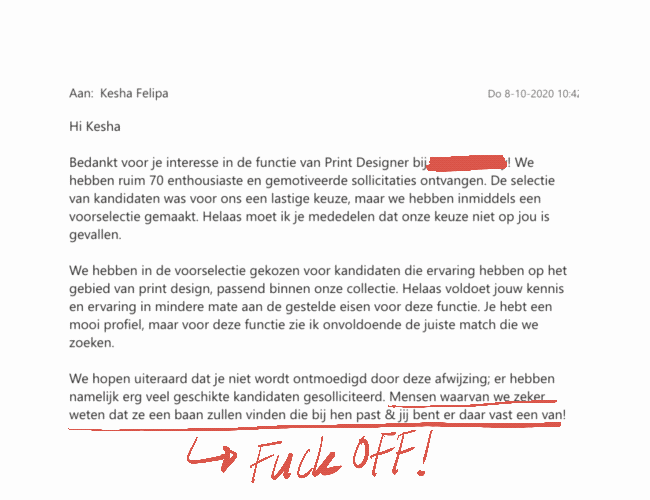
WHAT DOES OTHERS SAY?
Ik ben bij je presentatie geweest vandaag (13 april 2022 ), maar kon je niet meer spreken (moest weg om les te geven). Wat heb jij een indruk gemaakt met je speech. Je staat daar me toch een partij zeker, trots, authentiek te zijn! Dit is wat een powervrouw kan zijn, zoveel is me wel duidelijk. Ik ben nu al trots dat wij jou als student hebben mogen hebben. Inhoud, gezonde eigenwijsheid en charisma: de beste combinatie. Ik ga je volgen, als je bij ons klaar bent. Wauw!
— Elsje van Leeuwen, docent ABV (en ook vroeger bij de FHK Master Kunsteducatie)
ENG: I attended your presentation today (April 13, 2022), but I wasn’t able to speak to you (had to leave to teach). What an impression you’ve made with your speech. You stand there as secure, proud, authentic! This is what a powerful woman can be, that much is clear to me. I am already proud that we are honored to have you as a student. Content, self-willed stubbornness and charisma: the best combination. I’ll follow you when you’re done with your studies at Fontys Hogeschool voor de Kunsten. Wow!
— Elsje van Leeuwen, lecturer ABV (formerly at FHK Master Kunsteducatie)
Als je studenten mag begeleiden zoals Kesha dan is dat een cadeautje. Ze is nieuwsgierig, ondernemend, leergierig, bewust, open, zorgvuldig en betrokken. Afgelopen anderhalf jaar heb ik haar enorm zien groeien op persoonlijk vlak. Doordat ze moeilijkheden bewust is aangegaan, heeft ze zich leren open te stellen naar haar omgeving, maar vooral ook naar haar studenten. Ze heeft ontdekt dat ze vooral zichzelf moet en mag zijn als kunsteducator en dat is haar kracht geworden.
Ze handelt vanuit de behoefte van de lerende, onderzoekt wat een lerende motiveert om te willen leren. Daarnaast wil ze de lerende graag bewuster maken van hun eigen leerproces. Ze verdiept zich echt in het individu of de doelgroep, kijkt breed en heeft daar een nieuwsgierige open houding in. Daarin neemt ze de visie en behoefte van de onderwijsorganisatie mee.
Met haar achtergrond kan ze de manier waarop we kijken naar inclusiviteit in het onderwijs doorbreken. Ze is uit haar schulp gekropen en zich over drempels heengezet om van haar afkomst haar trots te maken.
Studenten spiegelen mij vaak en maken mij elke keer weer bewust van mijn denken en handelen. Kesha heeft dat als geen ander gedaan en ik heb veel van haar geleerd.
Ik gun Kesha van harte deze prijs, voor haarzelf maar zeker ook vanwege de uitstraling die dit heeft naar het kunstonderwijs.
Jeanne Berndsen
Instituutsopleider Fontys Academie voor Beeldende Vorming
Mei 2022
ENG: If you can coach students like Kesha, that is a gift. She is curious, enterprising, eager to learn, aware, open, diligent and involved. In the past 1,5 year I have seen her grow enormously on a personal level. By consciously entering into difficulties, she has learned to open up to her environment, but especially to her students. She has discovered that she must and can be herself as an art educator and that has become her strength.
She acts from the needs of the pupil and investigates what motivates a pupil to learn. In addition, she would like to make the pupil more aware of their own learning process. She really immerses herself into the individual or the target group, has a broad view and a curious open attitude. She does this with taking into account the vision and needs of the educational organization.
With her background, she can break the way how we look at inclusiveness in education. She has come out of her shell and pushed herself over thresholds to make herself proud of her own heritage.
Students often mirror me and make me aware of my thoughts and actions every time. Kesha has done that like no other and I have learned a lot from her.
I wholeheartedly grant Kesha this prize, for herself but also because of the signal this gives towards art education.
Jeanne Berndsen
Institute trainer Fontys Academy for Visual Education
May 2022
Vanuit haar brede oriëntatie op de wereld om haar heen, is Kesha een waardevolle schakel binnen (kunst)onderwijs. Zowel bínnen de muren als daarbuiten. Doordat ze zichzelf vanuit een sterk engagement kritische vragen durft te stellen, houdt ze niet alleen haar eigen missie op gang, maar inviteert ze – direct dan wel indirect – óók de ander om na te denken, te struikelen, te twijfelen en te herzien. Een kwaliteit om verandering teweeg te brengen die nodig is in de wereld van nu. Niet door te forceren, maar door uit te nodigen.
— Dagmar Baars, docent ABV (oud-docent van Felipa tijdens DBKV DTV-3 voor het Vak Vakbeschouwing)
ENG: From her broad orientation on the world around her, Kesha is a valuable link in (art) education. Both inside and outside the walls. She dares to ask herself critical questions based on a strong commitment, she not only keeps her own mission going, but she also invites others – directly or indirectly – to think, stumble, doubt and reconsider. A quality to bring about change that is needed in today’s world. Not by forcing, but by inviting.
— Dagmar Baars, lecturer ABV (former lecturer of Felipa during DBKV DTV-3 for course Vakbeschouwing)
“We hebben Kesha het afgelopen jaar als een gedreven en toegewijde persoon ervaren.
Als student, (docent Beeldende Vorming) en tegelijkertijd als beroepspraktijk professional, (afgestudeerd AMFI met ervaring in het bedrijfsleven).
Een prachtige basis om mee aan de slag te gaan tijdens de lessen Integrale opdracht waar de MBO studenten Fashion meegenomen worden in de beroepspraktijk.
Dit gebeurt middels blokuren van meer dan 3 uur per les wat actieve inzet en aanpak vergt van de docent(en) en derhalve voorbereiding en team overleg.
Kesha heeft zich vanaf het eerste moment enorm ingezet en ons laten voelen en ervaren hoezeer zij haar rol serieus
neemt en haar taak met passie en empathie wil realiseren.
Wij zijn erg blij met haar nominatie voor deze bijzondere prijs en wensen haar ongelofelijk veel succes!.”
— Namens het Zadkine Fashion College team, directeur Kim Cornelius en stagewerkplekbegeleider Ellen Haeser.
ENG: “We have experienced Kesha as a driven and dedicated person over the past year.
As a student, (teacher Visual Education) and at the same time as a professional practice professional, (graduated AMFI with experience in the business world).
A wonderful basis to work with during the Integral assignment classes where the MBO (secondary vocational education) Fashion students are included in professional practice.
This is done through block hours of more than 3 hours per lesson, which requires active commitment and approach from the teacher(s) and therefore preparation and team consultation.
Kesha has committed herself from the first moment and let us feel and experience how seriously she takes her role and wants to fulfill her task with passion and empathy.
We are very happy with her nomination for this special prize and wish her the best of luck!”
— On behalf of the Zadkine Fashion College team, director Kim Cornelius and internship workplace supervisor Ellen Haeser.
“You only are free when you realize you belong no place — you belong every place — no place at all. The price is high. The reward is great.”
— Maya Angelou
IV – VISION
Directed by Dave Meyers & the little homies
FUTURE
MY NEIGHBOR TOTORO
The students I met during my internship at Zadkine are huge fan of the Studio Ghibli films. That is a Japanese animation studio of Hayao Miyazaki.
The films that the students like the most are Spirited Away (2001) and My Neighbor Totoro (1988). They have images of the movies as wallpaper on their laptops, Totoro keychains on their iPhones and they go banana’s when they see my own Totoro keychain attached to my Rains backpack.
As cool kids from Rotterdam area it surprised me somehow that these teens and late teens like these films. A characteristic of Studio Ghibli films is the attention for slowness and silence. Something that looks the opposite of these TikTok and Instagram generation.
A few weeks after I started muse about this fandom of the students I bumped into a video of Cinema Therapy (see the embed video). Licensed therapist Jonathan Decker and filmmaker Alan Seawright discussed movies and how these films can (or totally not!) can help to make sense of life. Their video about My Neighbor Totoro has gave me some answers why these students like this film so much. And is also an answer why I as teacher Visual Arts am able to reach these students, which are described as challenging for a numberless (false) reasons.
WHAT IF…
I win the Jacques de Leeuw Award 2022?
The Jacques de Leeuw Award offers opportunities to develop my vision through further study. The theme Otherness, which I want to explore even further, is not only topical but also vast. At this point, I’ve chosen a small part within the theme to start the journey how we all can have a different look at today’s global pop culture.
What exactly do I want to do? As a starting point, if I win, I will look at two red threads in my life – Japanese (pop) culture and hiphop – up close. The weird thing is that Japanese art pop culture and hip-hop flirt with each other. They inspire each other and they take elements from each other and create hybrid versions of each other’s art forms. To find out more, I’ve talked to Caroline Lassche: Lecturer at Fontys Hogeschool voor de Kunsten, Japanologist and art historian specializing in Japanese art.
Hiphop has its roots in the Caribbean (one of the founders DJ Kool Herc has Jamaican parents). To keep it a bit ‘closer to home’ for me, I want to see if two different islands, which are miles apart, Japan and Curaçao, have a cultural similarity?
Yes, there is. Curaçao and Japan, as insular cultures, have the same attitude towards second-hand clothing. Within the current context of sustainable fashion, rediscovering of cultural roots, lost past and – here it is again – hiphop, this is a research that would give me as a maker and educator a lot of insight into cultural identities, developments in rediscovering ancestral history and youth culture. For this I would go on a study trip to Japan (and Curaçao) to investigate this up-close at institutes and on the streets.
If I do not win, being nominated for Jacques de Leeuw Award 2022 have gave me the confidence to not be scared of what Joseph Campbell (Professor of literature – 1904-1987) called: the cave you fear to enter holds the treasure you seek. I shy away of this topic I researched in the academic year 21/22. But seeing that the stress I have endured as black woman in the arts and fashion world can be transformed into connection and reflection that can touch a lot of people. And let students been seen and heard.
Well if a nomination can touch not only me, but a communities where I spend time in: that makes a nomination not only personal, but transcending.

